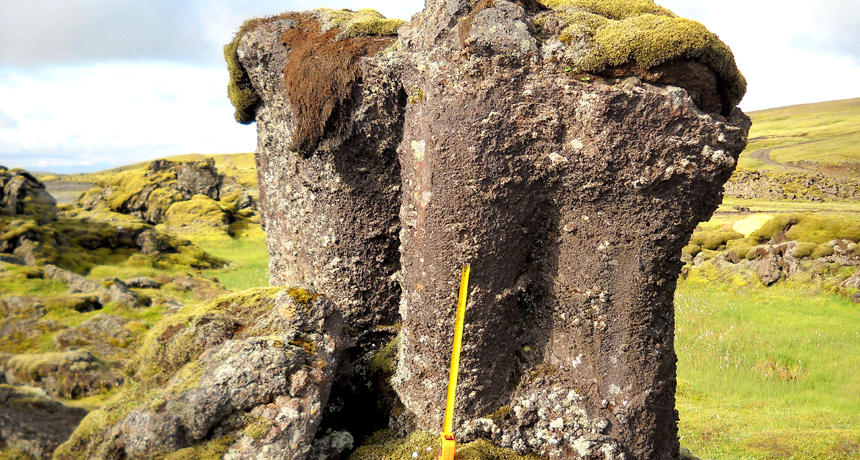Water helped erect Iceland’s lava towers
Science pointed the way to understanding why these curious natural pillars form

Lava pillars, seen here, formed in an Icelandic valley when molten rock flowed around rising columns of heated water. Water cooled the lava into rocky crusts, creating pillars.
Courtesy of T. Gregg







